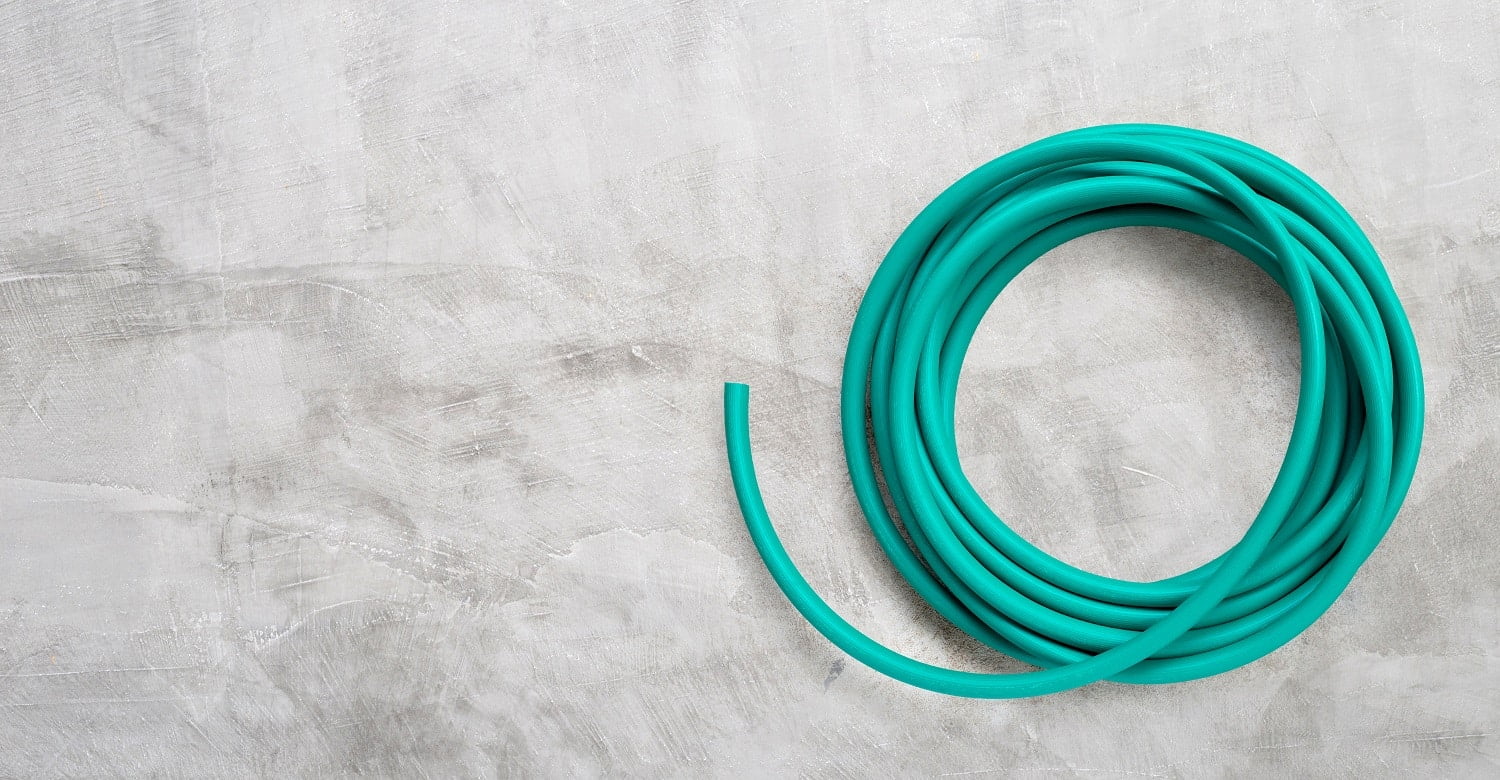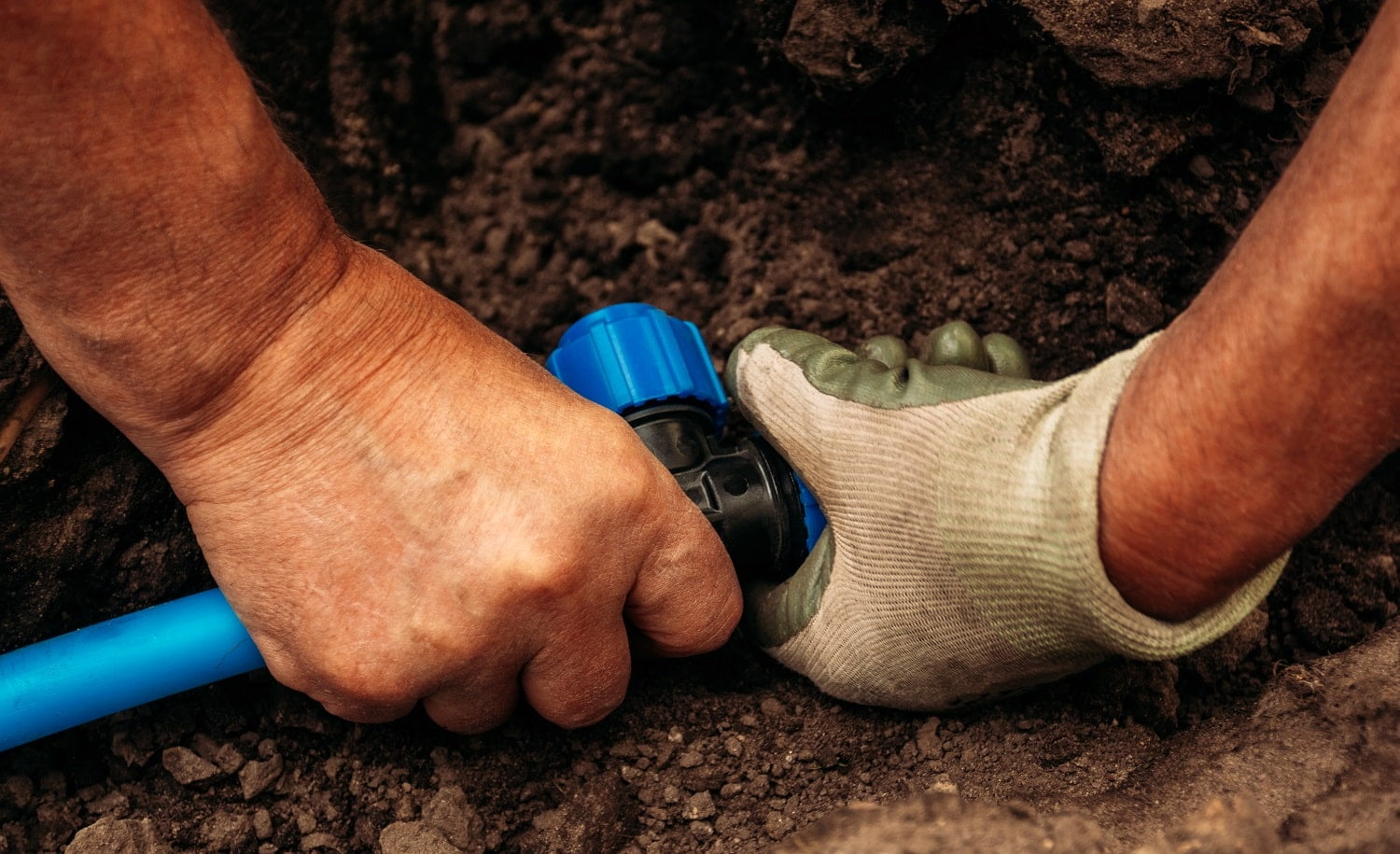It can be challenging to get water everywhere in your yard, where it might be needed, especially if you have more than one faucet to work with.

If you have to cover a large area, where gardens, livestock tanks, and yards are located in different parts of the property, then watering might be a tough task. Many have found it to be quite painful if they have to drag a heavy hose to the required areas each day.
Instead, it is much smarter to bury various hoses for their individual purposes. It makes the task more efficient, and you can wrap up quickly too.
So, taking your needs into account, we have highlighted how you can bury your garden hose. At the same time, we will also tackle whether it is advisable to bury your garden hose and the various factors you need to consider for the same.
Without further ado, let us get to all the details.
Steps for Burying a Garden Hose

-
Gather the Necessary Tools
First, you have to get the materials and tools needed to bury the garden hose. So, of course, apart from the garden hose you choose, you’ll also need a hose bib, a combination tee for the water to flow out, clamps for pipes to be fitted. You’ll also need hydrant caps, concrete tiles, rake, shovel, heavy-duty hoe, screwdriver, tools for clamping, hacksaw, and a propane torch.
After assembling the tools, you are left with two choices. Either you can dig the trench and then fit the pipe, or you can tackle it in sections. While we normally recommend choosing the method which works best for you, it is necessary to take the sectional approach if you need to use the hose before the entire process of burying it is complete.
-
Dig the Trench
You have to use your tools to dig the trench, but you must also make sure that you have leveled off the bottom. This will help you achieve uniform depth. Since hydrants are nearly a foot high, this should be your average depth when it comes to digging.
-
Install the Fittings and Pipes
Once your trenches are dug, you have to unroll the pipe and put it inside. If you feel the pipe is rolling up again, you should use some items to weigh it down. After that, you have to install the faucets and valves along this pipe when you feel the need.
Wherever you want a hydrant, you have to put in a combination tee. Sometimes, you’ll find it rather difficult to get this tee in the pipe. But, applying soap in the area of the connection will make it easier.
You also have to screw in your hose bib while ensuring that the orientation of the hose is maintained all through the trench.
-
Closing the Hydrant and Filling the Trench
Now, you have to make a hole in the cover for the hydrant. This is essential for the hose to move in and out. When you keep the hose open, it is best to be careful that it doesn’t interfere with mowing, gardening, or movement in general.
You’ll find that filling trenches is a lot easier if you have soft soil with little-to-no rocks. It is best to use the front end of a loader or a back-hoe for the job. You should avoid putting rocks back since this might apply undue pressure on the hose. Understandably, you’ll be losing soil, so try to find more in order to compensate for this loss.
After you find that the trench has reached ground level, try to put back the turf. Be sure to pay attention to the areas around your hydrant. You don’t want to fill in the hydrant spaces because it’ll be more difficult to attach a garden hose.
Tips for Burying Garden Hose
-
Avoiding Underground Connections
When burying the hose underground, you should keep some things in mind. First and foremost, you have to avoid connections underground. So, try getting a hose that’s a little longer than the length you want it to run for.
We understand that getting shorter hoses might seem more practical, as they’re easier to store, but making connections only works fine above the ground. Since most of these connections are made of metal, there’s a good chance of rust due to damp soil conditions.
There’s nothing worse than discovering that the pipe might have sprung a leak, only to dig up the ground to see that a connection has actually come loose. To avoid such situations, we recommend doing away with connections for underground hoses.
-
Get the Right Length
There’s nothing worse than when your hose pipe falls short of expectations. You wouldn’t want to dig up a trench only to find out that the hose is too short. We recommend measuring it beforehand and acquiring one accordingly. If you still have doubts, it is best to err on the side of more, in this case.
-
Quality Matters
As with most things, you will see that quality matters here as well. Get a hose which has a thicker wall. This will help you if you plan on burying it. After all, the dirt has an amount of weight. The deeper the trench, the more the weight on the hose.
If you buy a cheaper one, the risks of it collapsing are much more. On the other hand, a thick-walled hose is likely to have better insulation against cold weather, and it won’t get bent out of shape either.
-
Check if Laying a Pipe Makes More Sense
While burying a hose is an easier option, it doesn’t mean it is the right one. PVC pipes are more readily available as well as economical options to get water from one point to another.
Understandably, the hassle involved with PVC pipes is more, from making the joints to digging below the frost line. But, it is a superior long-term solution. You can bury a garden hose when you have a temporary need to transport water or if you want to work on a larger project at a later time.
-
Functionality and Connections
When you bury the hose, you have to know what the use is. This is because you can regulate the water flow accordingly. It is not fun to have to do so at the starting point each time there is an overflow problem. Instead, it is advisable to install a regulating attachment at the endpoint to ensure you get the desired flow of water.
What to Keep in Mind While Burying Garden Hoses
Now that you know what to do if you have to bury a garden hose, there are a few factors to be considered. We understand that you might want to bury the hose because you want the water to reach a difficult spot or don’t like dragging the hose to different areas. It might also be that you just dislike looking at the exposed hose.
Whatever the reason, you should consider fluctuations in temperature, the type of ground, as well as the digging and burrowing animals in the area. Let us look at the factors in greater detail.
-
Climate Considerations
While a garden hose that is buried does not freeze as quickly as one which is exposed, there is still a risk if the ground freezes to significant depths. You’ll find that sturdy hoses are quite able to handle the freezing temperatures well enough. But, if they freeze too often with water still inside, then there’s a good chance of quickly breaking down over time.
Furthermore, if an underground hose freezes, and you haven’t managed to blow it out for winter, then you won’t be able to use it until the ground thaws fully. Ultimately, a buried hose is great for seasonal use, but it depends on where you reside.
-
Ground Conditions
The conditions of the ground also play an essential role in influencing the decision to bury a hose. Even if you’re extremely motivated, you’ll have a tough time digging compacted, rocky, or caliche soils.
Of course, there are specialized tools and pickaxes that are designed specifically for the job. But, when you consider that the trench has to be the same length as the hose, this could seem like a daunting task.
-
Critter Troubles
This is mostly specific to an area. Rodents tend to be attracted to water. Their burrowing and digging activities usually cause problems because these animals might just decide to gnaw through the hose at a certain point. If you’re dealing with a serious rodent situation, then you should properly reconsider the plan to bury the garden hose.
Where to Bury the Garden Hose
The best bit about burying a garden hose, rather than any other item, is that it can curve around objects. Normally, these could impede the flow of water to the garden bed or other areas that need it. But, a garden hose can work around these to ensure that the water is transported without any hurdles.
Basically, this means that you can bury the garden hose anywhere. In fact, you might even do so under the driveway, making use of a PVC pipe and some water pressure.
What Kind of Garden Hose to Bury
Firstly, the kind of hose you’re burying depends on why you’ve decided to bury it. Neither your most expensive choice nor the cheapest hose will serve you too well if they are buried underground for a duration. Here are some of the types of hoses you might bury.
-
Rubber Hoses
You can stick to the classic by opting for an old-fashioned polyurethane or rubber hose to get the water from one place to another. Not only are they sturdy, but they are also equipped to handle fluctuations in weather very easily. These pipes can’t be crushed underneath the weight of the soil, either.
But, the best bit is that they won’t kink, accidentally, when you bury or lay them. We recommend getting a pipe with a larger diameter so that the maximum amount of water flows easily when the pipe’s being used.
-
Drip or Soaker
If you want to water areas that the hose runs through, then you should bury a soaker or a drip hose. In fact, you can even make one from a leaky and old hose if you have the right set of tools lying around. These pipes can work wonderfully if you set them up well.

Final Words
If you have been on the fence about burying your hose, we genuinely hope this guide will help clear the air. Speaking from personal experience, it is incredibly beneficial to have a buried hose, even where the ground tends to freeze.
The added mobility and lack of obstructions are factors that clearly work in favor of this decision. You’ll find that digging the trench and burying the hose isn’t too complex either. Of course, be mindful of your surroundings before making the decision.
Don’t forget to let us know your experiences with burying a garden hose to transport water.
Related Articles
10 Best Automatic Garden Hose Reels
